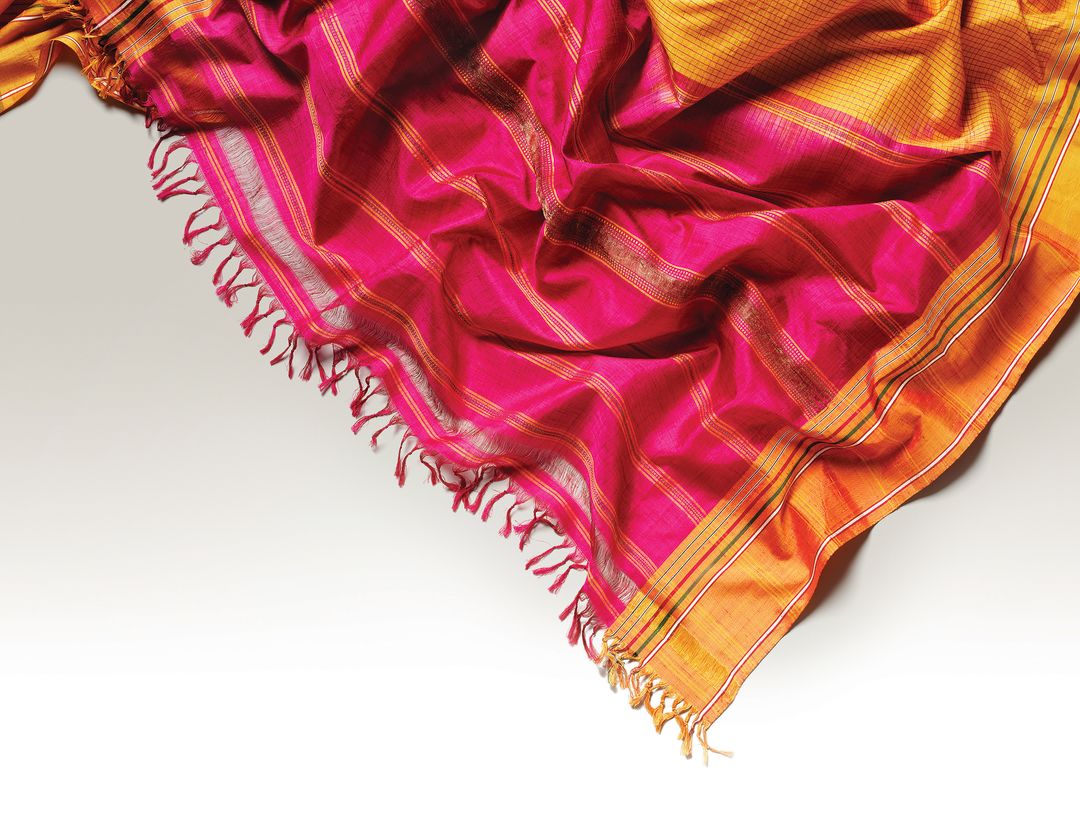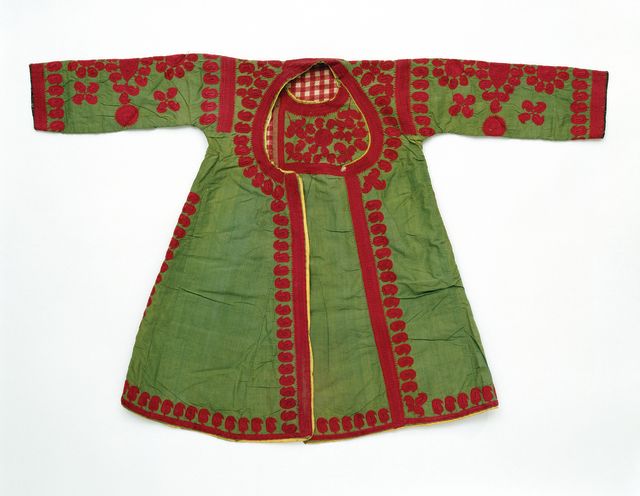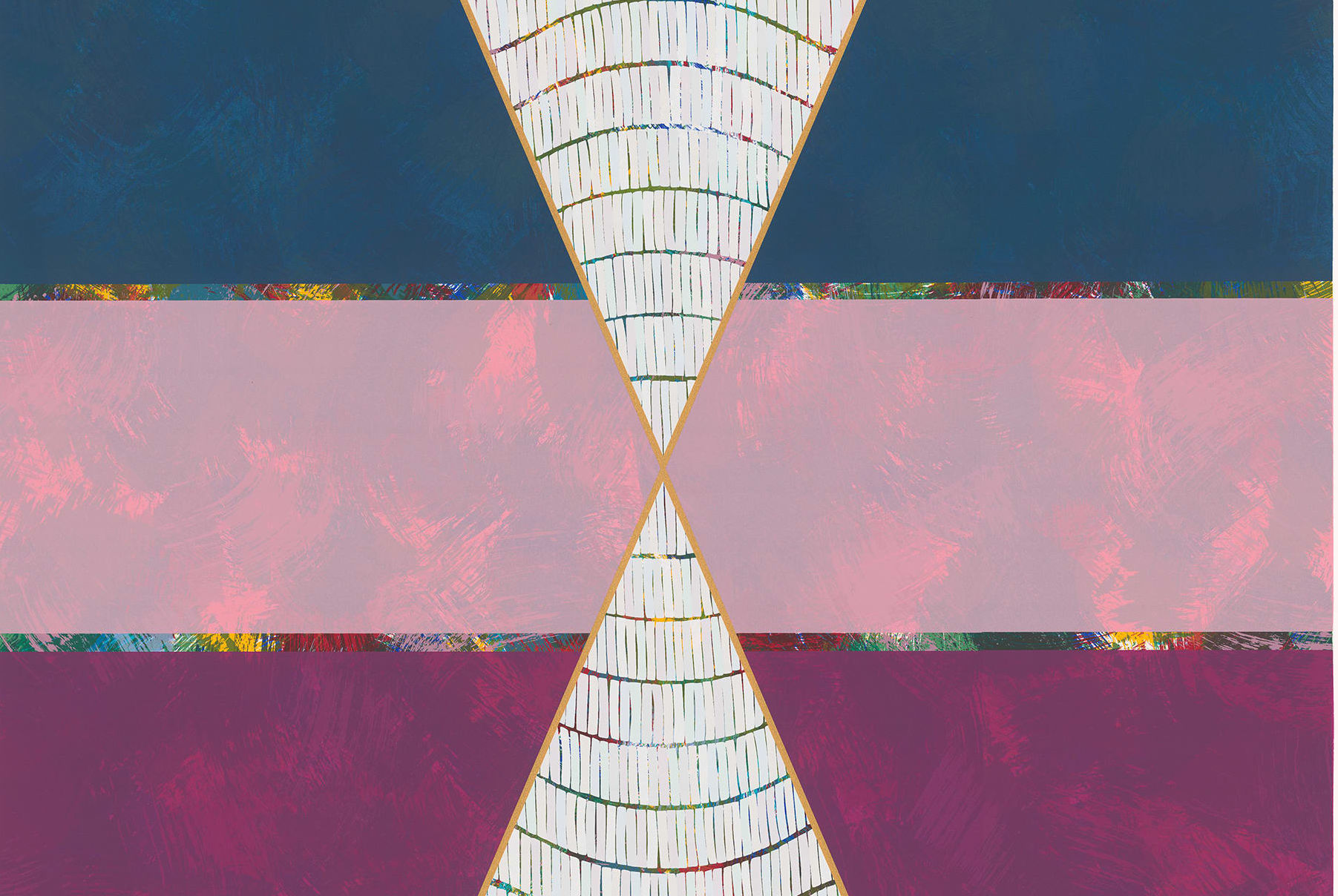A Major Exhibition at The Ringling Explores Centuries of Textiles from the Indian Subcontinent

A silk sari woven in 1867.
Walking through The Ringling’s exhibition The Fabric of India, on view July 7 through Oct. 13, provides quite a lesson in the history, politics and economy of India and its trading partners over more than 500 years. Thanks to the beauty and craftsmanship of the more than 140 textile items on loan from London’s Victoria and Albert Museum, however, it’s one that should go down easily.
Curator of Asian art Dr. Rhiannon Paget, who’s working on the exhibit with V&A staff, says it’s the first time The Ringling has collaborated with the British institution. It’s also The Ringling’s first major exhibition of Indian art. “It’s probably the best textile collection in a public institution in the world,” she adds. “We couldn’t ask for a better exhibition. It’s not just beautiful; it’s also looking at the forces that drove the trade.”

A child’s silk and cotton dress, circa 1900.
To that end, the exhibit is divided into six sections, ranging from Nature and Making (visitors will see the raw materials, including silkworm cocoons and dyes, that went into creating the textiles), Sacred (touching on how textiles were used in representing different faiths) and Splendid (featuring clothing worn in the royal courts, especially the Mughal dynasty, like a man’s satin and silk riding coat) to A Global Trade. In the latter you’ll learn how the rise of large ships contributed to growing markets in Southeast Asia and Europe. And Textiles in a Changing World centers on the age of industrialization, along with explaining how “khadi,” the plain homespun cloth familiar from images of Mahatma Gandhi and his spinning wheel, symbolized a form of political protest in India’s fight for independence from Britain.
The sixth section, At the Cutting Edge, displays some stunning contemporary designs in saris and other attire, often inspired by the patterns or techniques of earlier eras. Needless to say, the fabrics, especially those dating from several centuries ago, must be presented in low light and with careful humidity control to protect them. Paget says conservators from the V&A are supervising the installation of the exhibit, which must meet a long, thorough list of specifications.
That’s not the level of care one major piece in the show, a more than 50-foot Gujarati room hanging, received at one point in its international journey. “It was actually found in the trash on a sidewalk in New York,” Paget says of the hanging. It will look much better enshrined in a room of its own in the exhibit here.
Videos showing textile making processes, gallery walks and talks and other educational programs are all part of the exhibit’s run. For the latest, visit ringling.org.



